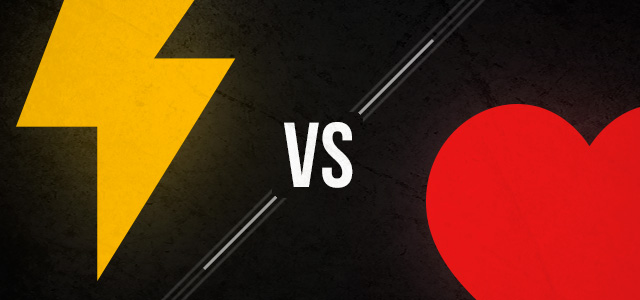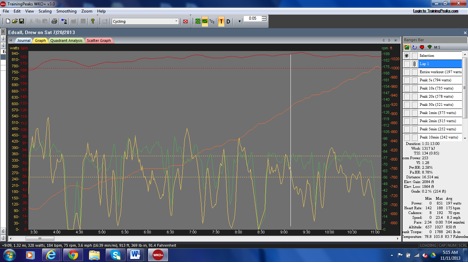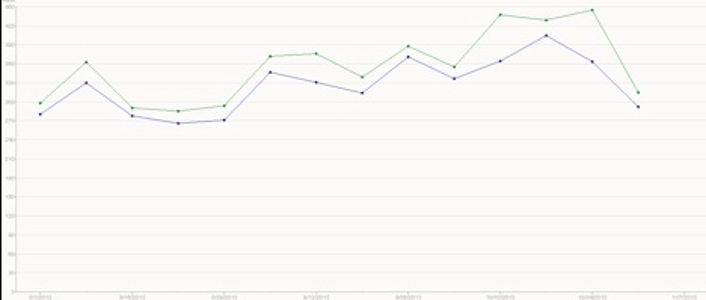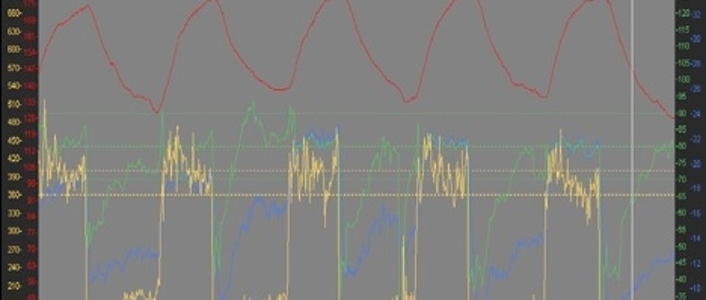Training with Power vs. Heart Rate: What’s Better?

Question: Is it truly better to train by ‘power’ vs. heart rate especially with a focus on stage racing and endurance races?
What are the benefits and what are the cons if any to training based on power?
Answer: Training with power has numerous benefits that can get you faster on the bike for both long distance(4+ hour races) and shorter distance races(<4 hour).
This subject can turn into a book so I am going to keep this article focused on these main points:
- Pros of training and racing with Power over Heart Rate
- Pros of training and racing with a Power Meter
Comparison of Using a Power Meter vs Using a Heart Rate Monitor:
With a great training program, you can improve using either power or heart rate. Both methods have scientific evidence backing them.
You can get faster with both! But, heart rate has some distinct downsides you should be aware of.
These include the following:
Slight fluctuations in HR on a day to day basis
Temperature, fatigue, dehydration, stimulants such as caffeine, lack of sleep, and time of day you train are a few examples of what can affect your HR.
One bpm isn’t always 1 bpm. Whereas for power, 1 watt is always 1 watt!
Cardiac Drift
As you become more fatigued, your HR continues to get higher throughout a workout due to multiple fatiguing factors such as dehydration and muscular fatigue.
So 160 bpm at the start of workout might yield 200 watts, but 160 bpm later in the workout might yield 190 watts.
Once again, power doesn’t have this issue
Response Rate
HR takes about 90-120 seconds to fully respond to a given effort. Power is instant.
This comes into significant play on the mountain bike for both workouts and race day “spiky” efforts.
Here’s a great example – see below.
Power is in yellow here: notice how up and down it is or “spiky”?
HR is steady, however, as seen in Red at the top: notice how steady it is even though the power is constantly up and down?
Using Power for post-race evaluation and also for workouts gives you “instant” look at the demands of the course and your efforts. You can execute workouts better and analyze races better.
Using a power meter can help in multiple ways.
Here are the biggest advantages to using a power meter in training and racing:
Evaluation
Power is like lifting weights. It gives you a distinct workload, or total amount of work done.
If you put out 200 watts for 20 minutes now, and then put out 210 watts for 20 minutes one month later, then you have improved.
You know when you are getting better and you can use that information to make an awesome training program! Below is a quick look at one of the many analysis tools I can use to make sure my athletes on power are improving throughout the year.
This particular athlete is improving; I know it, he knows it, and that feels great and it builds confidence which can really help athletes succeed!
This graph is looking at a particular athlete I coach.More specifically, his improvements over the past few months in peak 1 and 2 minute power.
This is a weakness of his that we have been improving to better meet the demands of his racing down in Florida.
Power is instant whereas HR takes about 90-120 seconds to respond
Best way to see this is to glance back up at the first image.
Power gives the rider and coach instant access to the particular demands of a course.
This can really help in creating future workouts, looking at what happened during a race or particular workout, and also looking at how the rider did in a race (i.e. new personal records).
In addition to this, the instant response power has allows for better execution of workouts. Perfect example is in the image below.
This is an example of an athlete executing 5 x 2 minute intervals.
Notice the slow rise in HR(Red) and the instant power response(Yellow).
Power allows you to see instant power to the pedals, and therefore improve workout execution and post workout analysis.
Racing
Power can do two very good things for you come race day: it can help you pace yourself, especially for longer 4+ hour races, and it can provide invaluable post-race data.
I find a lot of riders like to go out way too fast for 4+ hour races. Sure, everyone can hang on for 20 minutes.
When racing I actually anticipate this and will push a hard pace early on knowing my competition is literally destroying their body for the remainder of the race.
Having a power meter and knowing your limits can help keep you accountable for your efforts. It can help hold you back early on in a longer race so you can perform better and finish stronger.
Second part of this is race data analysis.
This is really where power can help, but, beware, this is can become very cumbersome.
This data provides me and my clients with data that is invaluable.
Race files can provide the following data:
- Improvements in fitness: see changes in power maxes such as 1, 5, 20, 60 minute maximal power efforts
- Specific demands of different courses
- Help establish strengths and weaknesses of athletes
- Evaluate your tactics and how they played out in the race: Did you go out too fast? Did you fade as the race went on? Did you burn too many “matches”? How can we use this to improve your results next time?
Ultimately power is a great way to train and more accessible now than ever.
The market has gotten more competitive, prices are dropping and the products continue to improve.
Products such as Stages Power meters are easy to use on the mountain bike, only way 20 grams, and cost below $1000.00.
Using a power meter can really help take your training and racing to a new level. But make sure you know what you are getting into.
Be ready to take the time to look over the files and be ready to execute workouts as planned. Do this and you will get faster and will start accomplishing things you never thought were possible.
If you need help with the process, you might want to consider contacting a knowledgeable coach or ask friends who use power for advice also.
Thanks for reading and best of luck fighting the cold weather for all you winter climate people.
 Drew Edsall is a Pro level coach at Studio 92Fifty. He has been coaching mountain bike athletes for 8 years. In addition to coaching, Drew is an accomplished Pro mountain bike racer specializing in Marathon, Stage racing, 50 mile, and 100 mile mountain bike races. He is currently racing for the Kenda/Felt Pro Mountain Bike Team. You can find more info about him at www.coachdrewedsall.com or www.92fifty.com
Drew Edsall is a Pro level coach at Studio 92Fifty. He has been coaching mountain bike athletes for 8 years. In addition to coaching, Drew is an accomplished Pro mountain bike racer specializing in Marathon, Stage racing, 50 mile, and 100 mile mountain bike races. He is currently racing for the Kenda/Felt Pro Mountain Bike Team. You can find more info about him at www.coachdrewedsall.com or www.92fifty.com


